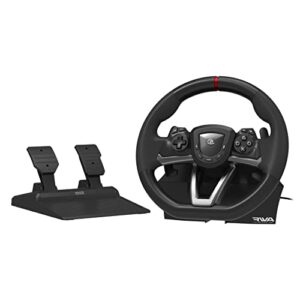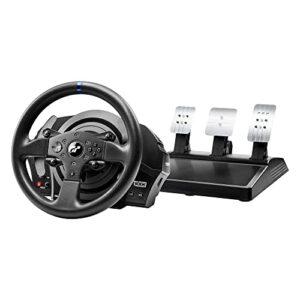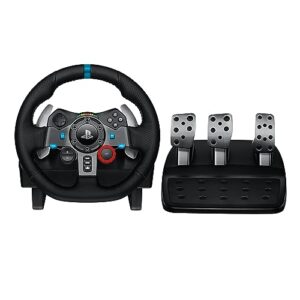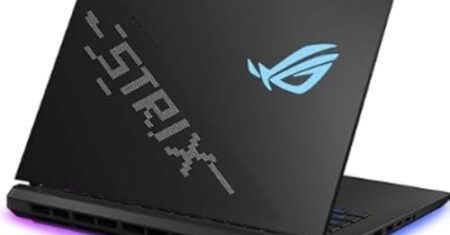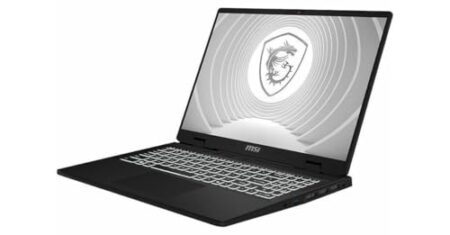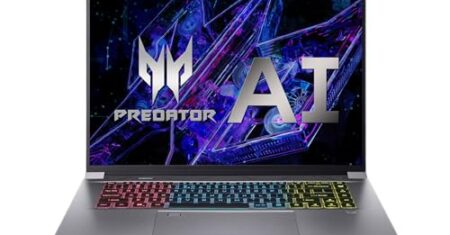Best Gaming Motherboards in 2025 (Top 10: ASUS, MSI and More)
Discover the best gaming motherboards for your PC build. Find top-rated options with the latest sockets, features, and performance for an ultimate gaming experience.
Bottlenecks start at the socket. If the board can’t feed the CPU, your GPU, storage, and patience all suffer. You want solid power delivery, good cooling, and the right I/O for your build.
You might be grinding AAA games, streaming, or rendering 4K video. This roundup points you to motherboards that match those goals — no fluff, just practical picks and why they matter for your build.
Contents
- The Best Gaming Motherboards
- ASUS ROG Strix X870E-E WiFi ATX
- ASUS ROG Strix Z890-E WiFi ATX
- ASUS ROG Strix B850-A WiFi ATX
- MSI MAG X870 Tomahawk WiFi ATX
- Gigabyte Z790 AORUS Elite AX
- ASUS TUF Z790-Plus WiFi ATX
- MSI MAG B550 Tomahawk ATX Motherboard
- ASUS TUF B650-Plus WiFi ATX
- Gigabyte B650 AORUS Elite AX
- ASUS ROG Strix B550-F WiFi II
- Final Thoughts on the Best Gaming Motherboards
- What’s the Difference Between a Gaming Motherboard and a Regular One?
- How to Choose the Best Gaming Motherboards
- Check Out the Best Gaming Motherboards
- Also Check Out Other Helpful Articles
- Video About the Best Gaming Motherboards
The Best Gaming Motherboards










ASUS ROG Strix X870E-E WiFi ATX
You’ll get a top-tier AM5 board designed for sustained performance with CPU-heavy tasks and gaming alike. The combination of AI features, advanced cooling, and extensive connectivity makes it a compelling pick for power users.
Pros
- 18+2+2 power stages deliver exceptional VRM stability
- Five M.2 slots and PCIe 5.0 support across devices
- AI-assisted tuning, cooling, and networking tools
- WiFi 7 and USB4 for bleeding-edge connectivity
Cons
- High price point compared to mid-range alternatives
- Complex BIOS options may be overkill for casual users
Overview
This ROG Strix X870E-E targets high-performance AMD builds where you want robust VRMs, extensive storage expandability, and intelligent software to help you tune and monitor the system. It’s engineered to handle Ryzen 7000/8000/9000 CPUs with confidence and to support demanding workflows.
Notable features and how they help you
- Top-end power delivery (18+2+2) and premium heatsinks keep temperatures and voltage delivery stable during sustained loads
- Five M.2 slots let you configure multiple high-speed NVMe volumes for games, scratch disks, and content libraries without compromise
- AI-driven utilities simplify overclocking, fan curves, and network prioritization so you don’t have to manually tune every parameter
Real-world benefits
You’ll see advantages in long encoding/render sessions, high-refresh gaming, and heavy multitasking because the board maintains performance without thermal throttling. The networking stack and USB4/Thunderbolt-level connectivity also make it ideal for content creators moving large files frequently.
Considerations and practical advice
- Expect to spend time exploring BIOS settings and AI features — they reward attention but add complexity.
- If you aren’t using multiple M.2 drives or advanced connectivity, a lower-tier X870 board may provide better value.
Overall, this board is tailored for enthusiasts and professionals who want a future-facing AM5 platform with comprehensive cooling, connectivity, and intelligent controls.
ASUS ROG Strix Z890-E WiFi ATX
This flagship Z890 board is built for the newest Intel Ultra processors and AI-accelerated PC features, offering exceptional expandability and advanced cooling. It’s aimed at enthusiasts who need maximum connectivity and sustained performance.
Pros
- 18+2+1+2 power stages for excellent VRM stability
- Seven M.2 slots and wide PCIe 5.0 support
- Thunderbolt 4, USB-C, and WiFi 7 connectivity
- ASUS AI features for overclocking, cooling, and networking
Cons
- Premium price that may not suit every budget
- Complex feature set can have a steeper learning curve
Overview
You’ll find the ROG Strix Z890-E positioned as a high-end Intel platform for builders who want bleeding-edge I/O and extensive storage capabilities. It’s engineered to handle modern multi-die CPUs and AI-accelerated workloads with efficient thermal solutions and smart tuning.
Core strengths and what they mean for you
- Massive VRM architecture gives you confidence under heavy multi-threaded loads and prolonged gaming sessions
- Seven M.2 slots make it simple to create experimental or production systems with multiple NVMe drives for games, scratch, and backups
- Advanced connectivity (Thunderbolt 4, USB4/USB-C, WiFi 7) keeps you compatible with fast external devices and networks
Practical insights
You’ll get real gains when running content creation workloads, virtualization, or multi-tasking heavy apps since the board maintains stable power and low thermals. ASUS’s AI tools help automate frequency tuning and fan behaviour so you can focus on work or play rather than manual tweaking.
Considerations
- If you’re building a simpler gaming rig, the Z890-E’s features may be overkill; a mid-range Z790 board could be a better value.
- Double-check case compatibility and airflow because the board’s thermal solutions and six-seven M.2 devices benefit from good chassis ventilation.
For power users aiming at future-looking Intel platforms with AI-capable hardware, this board is an excellent foundation.
ASUS ROG Strix B850-A WiFi ATX
You’ll get a feature-rich AM5 option with a strong VRM, multiple M.2 slots, and WiFi 7 for next-generation networking. It’s aimed at users who want a balance between high performance and sensible price for an AM5 build.
Pros
- 14+2+2 power stages and thick metal heatsinks
- Four M.2 slots and PCIe 5.0 readiness
- WiFi 7 with Q-Antenna and advanced USB connectivity
- Good onboard audio and ASUS AI utilities
Cons
- Higher weight and size may not suit compact cases
- Some accessories and extras may be limited on certain SKUs
Overview
The ROG Strix B850-A WiFi is designed for builders who want a modern AM5 feature set without stepping up to the absolute top-tier X870 boards. It provides strong VRMs, extensive storage options, and next-gen connectivity that will keep your build relevant for several years.
Highlights and practical benefits
- Four M.2 slots let you build multi-drive setups for games, scratch, and backups without compromise
- WiFi 7 and 2.5 Gb LAN mean you’re ready for fast home networks and low-latency multiplayer
- ASUS AI Advisor and AI Networking simplify tuning and quality-of-service management for gaming and streaming
Usage scenarios and tips
You’ll appreciate this board if you plan to run high-core-count Ryzen CPUs and want confident VRM cooling for long sessions, or if you intend to use multiple NVMe drives for content workflows. The audio subsystem and USB 20 Gbps Type-C are nice touches for creators.
Caveats
- If you’re building in a small form factor, check dimensions and M.2 access before purchase.
- Some buyers report fewer bundled extras on used/renewed units — verify what’s included when you buy.
This board is a strong all-around pick for future-proof AM5 builds that want premium connectivity and storage flexibility without paying top-tier X-series prices.
MSI MAG X870 Tomahawk WiFi ATX
You’ll get wide PCIe 5.0 support, USB4/40G connections, and robust thermal hardware for fast AM5 builds. The board balances rich I/O with MSI build quality for enthusiasts who value expandability.
Pros
- PCIe 5.0 and M.2 Gen5 support for future drives
- USB 40Gbps (USB4) and abundant rear I/O
- Strong PCB and reinforced connectors
- Good BIOS and frequent firmware updates
Cons
- Relatively high price for the feature set
- Some lane-sharing limitations when using multiple M.2 slots
Overview
The MSI MAG X870 Tomahawk is built for AM5 users who want a feature-rich board without stepping into boutique pricing. It emphasizes next-gen connectivity like USB 40Gbps, PCIe 5.0, and WiFi 7 while retaining MSI’s rugged construction.
Highlights and practical usage
- PCIe 5.0-ready slots and M.2 Gen5 support position you well for fast GPUs and NVMe drives
- A wide I/O array including high-speed USB and multiple NIC options makes it suitable for content creators and heavy peripheral users
- MSI’s BIOS and driver support are mature and frequently updated, which helps compatibility with new CPUs and components
Real-world considerations
You’ll benefit if you move large files regularly, frequently plug in fast external devices, or run multi-drive storage arrays. The board’s reinforced PCIe and M.2 areas are also welcome if you swap heavy GPUs or hot NVMe drives often.
Drawbacks and tips
- If you don’t actually need USB 40G or multiple Gen5 devices, the premium may not be worth it.
- As always, consult the manual for M.2/PCIe lane sharing rules to avoid unintentional bandwidth reduction.
This board is a good fit for forward-looking AM5 builds that prioritize connectivity and expandability.
Gigabyte Z790 AORUS Elite AX
This Z790 AORUS model gives you modern DDR5 support, quad M.2, and good thermal hardware at a competitive price. It’s a strong choice if you want a feature-packed Intel board without spending for boutique models.
Pros
- Twin 16+1+2 phase VRM with 70A power stages
- Four M.2 slots and PCIe 5.0-ready design
- USB 3.2 Gen2x2 Type-C and Intel WiFi 6E
- EZ-Latch and durable PCIe armor
Cons
- Can be heavier on price than basic Z790 boards
- Some users report wanting more USB-C ports
Overview
You’ll find the Z790 AORUS Elite AX targeted at Intel builders who want DDR5 performance and modern I/O without jumping to the most expensive flagship boards. It balances power delivery, storage expandability, and everyday usability for gaming and content tasks.
Key strengths
- Strong VRM design ensures consistent performance with 12th/13th Gen Intel CPUs and higher-end 14th Gen compatibles
- Four M.2 slots give you flexible SSD configurations—fast boot drive plus additional high-capacity NVMe storage
- Useful build conveniences like EZ-Latch PCIe and reinforced armor make installation and long-term handling simpler
Real-world usage
You’ll appreciate faster load times in games and applications when using NVMe drives and the responsiveness from DDR5 memory. The onboard networking and plentiful USB connectivity cover most peripheral needs without immediate expansion.
Caveats and tips
- If you need many front-panel USB-C connections, double-check available headers and case compatibility.
- The board is a mid-to-high tier Z790 option; compare it to both cheaper Z790 and pricier Z790/X890 alternatives to confirm it matches your upgrade path and budget.
For Intel DDR5 builds that need solid storage and I/O at a reasonable midrange price, this AORUS board is a pragmatic and well-rounded selection.
ASUS TUF Z790-Plus WiFi ATX
You get a solid balance of modern features and durability without paying flagship prices. The board is engineered for stable long-term operation and covers the essentials for a high-performance Intel build.
Pros
- Robust 16+1 DrMOS power delivery for stable overclocking
- Four M.2 slots and PCIe 5.0 GPU support
- Built-in WiFi 6 and 2.5 Gb LAN
- Durable TUF components and comprehensive cooling
Cons
- Fewer premium extras compared to ROG-class boards
- PCIe Gen5 NVMe and GPU lane sharing can be confusing
Overview
You’ll find the TUF Gaming Z790-Plus WiFi pitched at builders who want an up-to-date Intel platform without an extreme price tag. It supports LGA 1700 Intel 12th/13th/14th Gen CPUs, DDR5 memory, PCIe 5.0 for GPU, and multiple M.2 drives—giving you room to upgrade over time.
Key features and what they mean for you
- 16+1 DrMOS VRM design for reliable power delivery and headroom during occasional overclocking
- Four M.2 slots so you can mix high-capacity storage and a fast NVMe boot drive
- Integrated WiFi 6, Thunderbolt 4 (USB4) support and front USB-C for modern connectivity
Benefits in daily use
You’ll notice stable performance in sustained gaming and productivity loads thanks to the beefy VRM and thermal design. The TUF line is also built with long-term durability in mind, which matters if you plan to keep the board through one or two CPU upgrades. The BIOS is straightforward, and features like the PCIe slot release button make hardware swaps easier.
Limitations and practical advice
- If you’re a heavy tuner or want every flagship convenience (like advanced RGB, extra USB-C ports, or a built-in audio amp), a higher-tier ROG board will offer more.
- Be mindful of resource sharing: some Gen5 M.2 and GPU lane configurations affect bandwidth; check the manual when populating slots.
Overall, this board is a dependable, well-rounded choice if you want modern Intel features without stepping into premium price tiers.
MSI MAG B550 Tomahawk ATX Motherboard
This Tomahawk remains a favorite for solid build quality, stable VRMs, and sensible feature set at a competitive price. It’s an excellent platform if you want dependable performance without a premium brand markup.
Pros
- Strong VRM and extended heatsink design
- M.2 Shield Frozr keeps NVMe temperatures in check
- 2.5G LAN plus plentiful USB connectivity
- Straightforward BIOS and good compatibility
Cons
- No integrated WiFi on some SKUs
- DDR4 limits future memory speed upgrades compared to DDR5 boards
Overview
The MSI MAG B550 Tomahawk is a well-regarded mid-range board that gives you a robust AM4 platform with reliable power delivery and sensible features. If you’re building with Ryzen 3000–5000 CPUs and want a solid, fuss-free foundation, this is a dependable choice.
What you’ll get and why it matters
- A beefy heatsink and strong VRM layout that maintain stability during gaming and moderate overclocking
- M.2 Shield Frozr to help control NVMe temperatures under sustained I/O
- A clean layout and competent on-board audio for general-purpose builds
Practical benefits and usage
You’ll find this board tolerant of long gaming sessions and capable when paired with mid-to-high-end Ryzen chips. It’s an especially good pick for folks who prefer tried-and-true hardware with minimal surprises during assembly.
Limitations and buying tips
- If you want the newest DDR5 memory or AM5 support, this board will not meet that need.
- If you require onboard WiFi, confirm the SKU includes it or plan for a dongle or add-in card.
Overall, the Tomahawk continues to be a sensible, no-nonsense choice for mainstream Ryzen gaming rigs and daily drivers.
ASUS TUF B650-Plus WiFi ATX
This board gives you an affordable route to AM5 and DDR5 with good build quality and a capable feature set. It balances future-proof connectivity and stable power delivery for mainstream Ryzen builds.
Pros
- 12+2 power stages and solid VRM cooling
- PCIe 5.0 M.2 support and USB4 front panel readiness
- Built-in WiFi and 2.5 Gb Ethernet
- User-friendly ASUS firmware and update tools
Cons
- Some ambiguity around full PCIe 5.0 lane distribution
- Manual is sparse on a few hardware details
Overview
You’ll get a practical AM5 platform with the TUF Gaming B650-Plus WiFi that targets gamers and mainstream creators moving to Ryzen 7000/8000/9000 CPUs. It emphasizes reliability, a straightforward feature set, and long-term platform support without a premium price.
What stands out
- 12+2 teamed power stages and durable components give stable operation even under heavy multi-threaded loads
- PCIe 5.0 on primary M.2 and plentiful modern I/O (USB4 support, front Type-C, WiFi 6) for contemporary peripherals
- Simple yet effective cooling and ASUS BIOS options that make memory tuning and fan control approachable
Practical benefits and use cases
You’ll appreciate this board if you want a no-nonsense AM5 foundation that supports EXPO/XMP memory profiles and fast storage. It’s a good choice for gamers who want to pair a mid-to-high Ryzen CPU with fast NVMe storage and decent onboard networking.
Limitations and tips
- If you need the absolute highest VRM headroom for extreme overclocking, look at X670/X870 alternatives.
- Double-check slot bandwidth when populating multiple M.2 drives since some lane sharing rules may limit maximum throughput.
In short, this board is a cost-effective AM5 option that’s well suited to the majority of builders who value reliability and essential features over premium extras.
Gigabyte B650 AORUS Elite AX
A solid and stable B650 board that comes with a lengthy warranty and a strong set of features for the price. It’s particularly attractive if you value long-term support and practical build conveniences like the EZ-Latch.
Pros
- Twin 14+2+1 phase VRM with 70A power stages
- 5-year warranty for peace of mind
- EZ-Latch PCIe/M.2 connectors and solid thermal design
- WiFi 6E and 2.5GbE networking
Cons
- Onboard audio is adequate but not audiophile-grade
- No onboard BIOS post code LED on some revisions
Overview
The B650 AORUS Elite AX is a practical AM5 board that emphasizes reliability, a favorable warranty, and user-friendly features. It’s aimed at mainstream builders who want strong core specs without paying extra for boutique extras.
Practical features that matter
- Twin 14+2+1 VRM configuration with high-current power stages gives you good headroom for mainstream and high-end Ryzen CPUs
- The EZ-Latch PCIe and M.2 quick-release designs streamline drive and GPU installation and make upgrades less fiddly
- A 5-year warranty is a strong selling point if you plan to keep the platform long-term
Everyday benefits
You’ll enjoy fast boot and storage performance with PCIe 5.0-capable slots and multiple NVMe options. Networking is robust for online gaming and streaming, and the board’s layout helps with tidy cable management during builds.
Limitations and buying advice
- If you need very high-end audio features or specialized hardware, consider pairing with a discrete audio solution.
- Some buyers note the lack of a printed manual and recommend downloading the PDF before starting a build.
Overall, this board is a balanced, warranty-backed option for AM5 builders who prefer practical conveniences and long-term support.
ASUS ROG Strix B550-F WiFi II
It’s a proven mid-range board that delivers solid performance and great feature coverage for 3rd-gen and compatible Ryzen processors. The combination of PCIe 4.0, WiFi 6E, and 2.5 Gb LAN makes it a versatile option for gaming and everyday productivity.
Pros
- PCIe 4.0 support and dual M.2 slots
- WiFi 6E and 2.5 Gb LAN for fast networking
- Reliable ROG build quality and BIOS features
- Good value for a midrange gaming board
Cons
- Limited to AM4 platform — not future AM5-ready
- Only one M.2 slot is PCIe 4.0 depending on CPU choice
Overview
If you’re building or upgrading an AM4 system around 3rd-gen Ryzen processors, the ROG Strix B550-F WiFi II remains a solid and widely used choice. It blends the convenience of modern connectivity with dependable performance and a familiar ROG feature set.
What you’ll care about
- PCIe 4.0 compatibility (on the primary slot) gives you faster NVMe options for a responsive OS and game load times
- Integrated WiFi 6E and 2.5 Gb Ethernet cover most networking use cases out of the box
- Easy-to-use BIOS and fan controls make tuning and thermal management straightforward
Practical usage notes
You’ll get a stable system for gaming and content creation at a reasonable cost. The board’s layout and headers are friendly to new builders, and the modest RGB options let you keep an understated build if that’s your preference.
Limitations and tips
- The AM4 socket is mature; if you want long-term CPU upgrade paths beyond Ryzen 5000/3000 series, you’ll need AM5.
- Check slot and lane sharing when populating multiple drives to avoid unintended bandwidth drops.
For many builders, this board strikes a comfortable middle ground between cost and capability.
Final Thoughts on the Best Gaming Motherboards

Pick the ASUS ROG Strix X870E-E WiFi ATX if you’re building on AM5 and demand top-tier, sustained performance. Its strengths are strong VRMs, advanced cooling, AI features, and wide connectivity — ideal for high-core-count Ryzen CPUs, creators who render and encode, and gamers who want headroom for overclocking and fast storage.
Choose the ASUS ROG Strix Z890-E WiFi ATX if you’re on Intel’s platform and need maximum expandability and AI-ready features. It’s built for Intel Ultra processors, offers excellent cooling and connectivity, and is the best fit for enthusiasts who run AI-accelerated workflows, heavy multitasking, or multi-drive setups.
What’s the Difference Between a Gaming Motherboard and a Regular One?
A motherboard ensures that all other computer components work together seamlessly. It connects key hardware like the CPU, memory, SSDs, and peripherals, such as keyboards and mice, while also supplying power to them.
The main difference between a gaming motherboard and a standard motherboard lies in construction and features. Gaming motherboards are built for higher performance, offering better heat dissipation, extra USB ports, more expansion slots, advanced overclocking, and other gamer-focused features.
How to Choose the Best Gaming Motherboards
Choosing the best gaming motherboard requires attention to several factors, including CPU compatibility, chipset type, motherboard size, number of RAM slots, and expansion capabilities. Below are key aspects to consider:
1. AMD or Intel? Pick a Motherboard Compatible with Your CPU
When selecting a gaming motherboard, start with the processor you have or plan to buy. Compatibility is essential for smooth performance. AMD processors generally use Ryzen CPUs with AM4 sockets, while Intel CPUs use Core i processors with sockets like LGA1151, LGA1200, or LGA1700, depending on the generation.
High-end CPUs, such as AMD Threadripper or Intel Core Extreme, require specialized sockets like TR4 or LGA2066, which are designed for power users who need extra performance for gaming or heavy workloads.
2. Choose the Right Chipset and Motherboard Size
The chipset and size of your motherboard influence performance, compatibility, and space in your PC case.
For High-End Gaming Setups: Modern chipsets with ATX or EATX form factors are ideal. Intel Z-series and AMD X-series chipsets support overclocking, multiple GPUs, and faster RAM. Larger boards provide more slots for RAM, multiple graphics cards, and improved cooling options, making them perfect for heavy gaming or future upgrades.
For Budget or Compact Setups: Entry-level chipsets and smaller boards (Micro ATX or Mini ITX) offer good performance for casual gaming and compact builds. These boards have fewer expansion slots and limited upgrade options but are excellent for smaller cases and more affordable setups.
3. RAM Slots Matter for Better Performance
More RAM slots allow you to expand memory easily. Gaming motherboards with at least 4 RAM slots are recommended, especially if you plan to upgrade in the future. For most gamers, DDR4 RAM with speeds of 2,666 MHz or higher is ideal, while overclocking can further enhance performance.
Best Gaming Headsets Under 60 dollars
4. Storage Options: SATA and M.2
For gaming, a fast storage solution is critical. Look for motherboards that support both SATA and at least one M.2 slot for SSDs. Basic boards usually provide 4 SATA ports, while advanced models can offer up to 8, supporting multiple drives and high-speed storage for faster load times.
5. Expansion Slots for Future Upgrades
Expansion slots allow the installation of additional hardware, like graphics cards, sound cards, or capture cards. Gaming motherboards often use PCI Express (PCIe) slots in various configurations (x16, x8, x4, x1). More slots and higher-bandwidth slots (like x16) support faster data transfer and future upgrades.
6. USB Ports for Peripherals
USB ports are essential for connecting peripherals. Gaming motherboards may offer 10 or more USB ports, including front-panel connectors. USB 3.2 or higher ensures faster data transfer and better power delivery for charging devices, while USB 2.0 is sufficient for keyboards, mice, and controllers.
Check Out the Best Gaming Motherboards
Still not sure which one to choose? Click the link below to see the best-selling products.
Also Check Out Other Helpful Articles
Take a look at more useful articles that can help you make more informed decisions.
- Best PS4 Accessories in 2025 (Top 9: HORI, eXtremeRate, and More)
- Best Racing Wheels For PC in 2025 (Top 8: Logitech G920, Numskull and More)
- Best Racing Wheels For PS4 in 2025 (Top 9: Logitech G29, Thrustmaster F1 and More)
Video About the Best Gaming Motherboards
We created a video on the topic. Just click to watch.
About the Author
